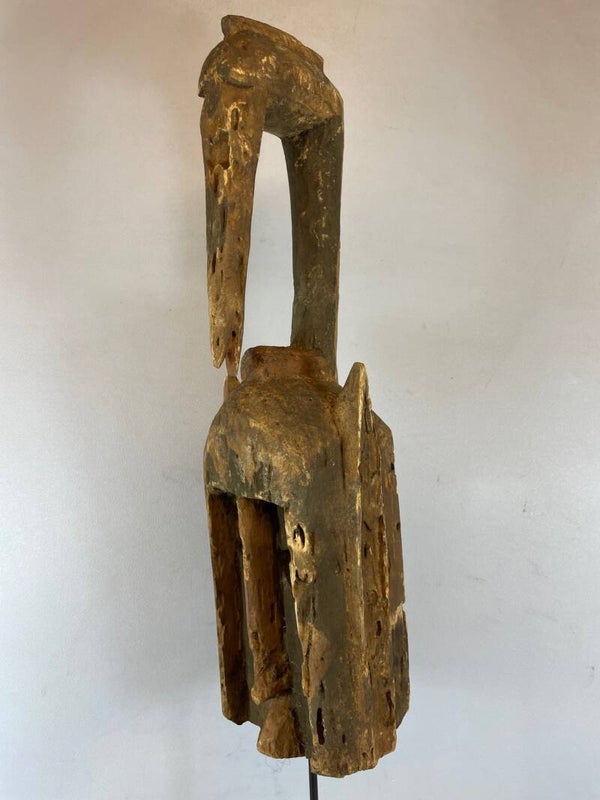230616 - Old African Dogon Satimbe Mask with bird on top - Mali.
Old African Dogon Mask with bird on top - Mali.
Height 51 cm.
This Dogon mask dates from the first half of the 20th century and was purchased in my private collection in 2012, with a certificate of authenticity.
Dogon masks surmounted by animals- or female figures are called satimbe, commemorating a mythological woman who first discovered and wore a mask. According to myth, her husband stole this mask, and from that time on Dogon women have been prohibited from wearing or coming close in contact with masks. The satimbe also represents the Yasigne, or "sisters of the mask", women who are born during the sigi festival, held every sixty years to honor the apprearance of death among humans.
The yasigne are the only women allowed to approach the masks and are involved in the performaces. Today, Dogon masks are used less often for dama festivals and are instead worn during secular performances, either greeting visiting tourists or in the celebration of civic events. Unlike contemporary satimbe masks, which are more naturalistic in their stylization of the human form, this mask has a more minimalist and abstract form.
Dogon art is not a single fixed style as has been often characterized in discussions of their sculpture, for the age of Dogon art extends to the past as early as the 12th century and continues to be created in the present with a number of sub-styles measured against the core of an identifiable Dogon art and style. The Dogon interchange stylistic elements with neighboring groups producing an interesting hybridism in some of their interesting sub-styles. This sculpture reflects an influence that neighboring groups can have on the well defined core of Dogon sculpture. West of the Dogon heartland the Dogon interact with the other major art producing people of Mali, the Bamana (Bambara). These figures show the influence of the Mande speaking Bamana (the Dogon are Gur language speakers – different language, different cultures!) in sculptural attributes well defined. These include a squared body, keel shaped head and ‘U’- shaped ears. A Bamana blacksmith could easily have carved the figure. If truly a Dogon figure it represented an ancestor identified to an individual, family, village or region. If an ancestor it represents either a familial ancestor or one of the original eight Nommo who descended to earth to create us, the world and continue to be interested in the affairs of man.
Recommended Reading: Laude's AFRICAN ART OF THE DOGON, Amex DOGON STATUARY, Ezra's ART OF THE DOGON, Ndiaye's ARTS DU PAYS DOGON.



















